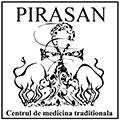Many of us breathe without even thinking of this act. And it is only normal this way, but – if for some people breathing comes easily, for other people it is very difficult. Breathing problems and how we breathe may start with a slight breathing discomfort, namely breathing is more labored and it takes a bigger effort. If we perform it with more difficulty, the airways are affected or obstructed. This obstruction may be caused by a virus or by the change of temperature, but in both cases the airways are lightly or severely affected. In the first stage, there can be noticed an inflammation of the airways.
Unless treated very seriously, this inflammation may develop into asthma. Asthma is the sick condition in which a human being breathes with more effort and difficulty. It is characterized by lack of air, thoracic sounds, cough and elimination of mucus. Asthma develops when the airways are inflamed and more sensitive, not only in the asthma crisis but all the time. Inflammation and asthma are a result of the stenosis and obstruction of the airways. This condition requires inhalation with medication of the adrenalin type to help the airways open. Use of this aid may aggravate the situation, because the body grows used to being helped instead of protecting itself.
Statistics show that asthmatics are 8% of the Earth’s population, which means that this disease must be treated with utmost attention. Asthma is a disease caused by the toxic environment, frequent viroses and various allergies. The crisis of asthma may occur several hours or days after the contact with the allergen, which makes its identification all the more difficult. In order to avoid such crises, we should run tests to see whether we are allergic to a certain food or other or whether we are allergic to various factors from the external environment. Asthma may also be triggered by emotional stress, fear or loss of self-control and self-command. A lot of children develop asthma after a fright. Usually, children are frightened of vaccines. Statistics prove that vaccinated children threaten to develop the disease more often than those who weren’t vaccinated.
Bronchitis is another disease of the airways. It is caused by the clogging of the airways leading to the lungs. In this disease, it is the mucous membranes of the lungs that are inflamed. Bronchites may be short, prolonged, severe or chronic. The factors that may lead to this classification are the infections and their number (frequency) in childhood, smoking, the toxic environment or the prolonged infections.
The disease causes dry cough and mucus discharge, as well as fever, chest and back pains. The patients with bronchitis grow tired when walking very fast or doing physical work. Other symptoms may be the pulmonary infections and the livid skin. The latter symptom shows lack of oxygen and the presence of a high amount of carbon dioxide in the blood.
The pulmonary chronic affection caused by the obstruction of the airways is known as pulmonary emphysema and it is often associated with smoking, inhalation of toxins and chemical substances. This disease obstructs the access to the lungs and the airways. It develops gradually and it worsens progressively. With time, the patient can breathe less and less air. As the disease advances, the oxygen in the blood becomes unstable or it diminishes, and the need arises for severe medication and an oxygen-supplying device. Although the airways and the lungs are affected, the stomach and the liver are indirectly affected, too. The treatment in the allopathic medicine consists of antibiotics, inhalations and oxygen supply, too. The traditional medicine offers herbal extracts containing GINGIFIL among others, acupuncture and a lot of other things. The traditional medicine practitioner decides how, how much and in what dosage the patient must take the medication until the complete recovery.
Sinusitis
The sinuses are situated in the walls of the skull, above the eyes, crossing the forehead, the nose and the cheekbones The disease is caused by bacteria, viruses, allergies and various viroses. Allergic sinusitis starts as an allergic rhinitis; it attacks the nasal membranes and it travels to the sinuses. People with an unstable immune system are exposed to sinusitis. The combination of acute sinusitis and mucus leads to local pressure and pains. The specific symptoms for people affected by sinusitis are the following: headache that may develop into migraine, rhinitis, cough, sensitive skin, and high fever. The typical treatment of sinusitis – as the allopathic medicine prescribes it – consists of punctions, antibiotics and drops. The traditional medicine offers acupuncture, hydroalcoholic extracts of medicinal herbs that must necessarily contain a high dose of mint extract beside other ingredients, to make the treatment efficient.


